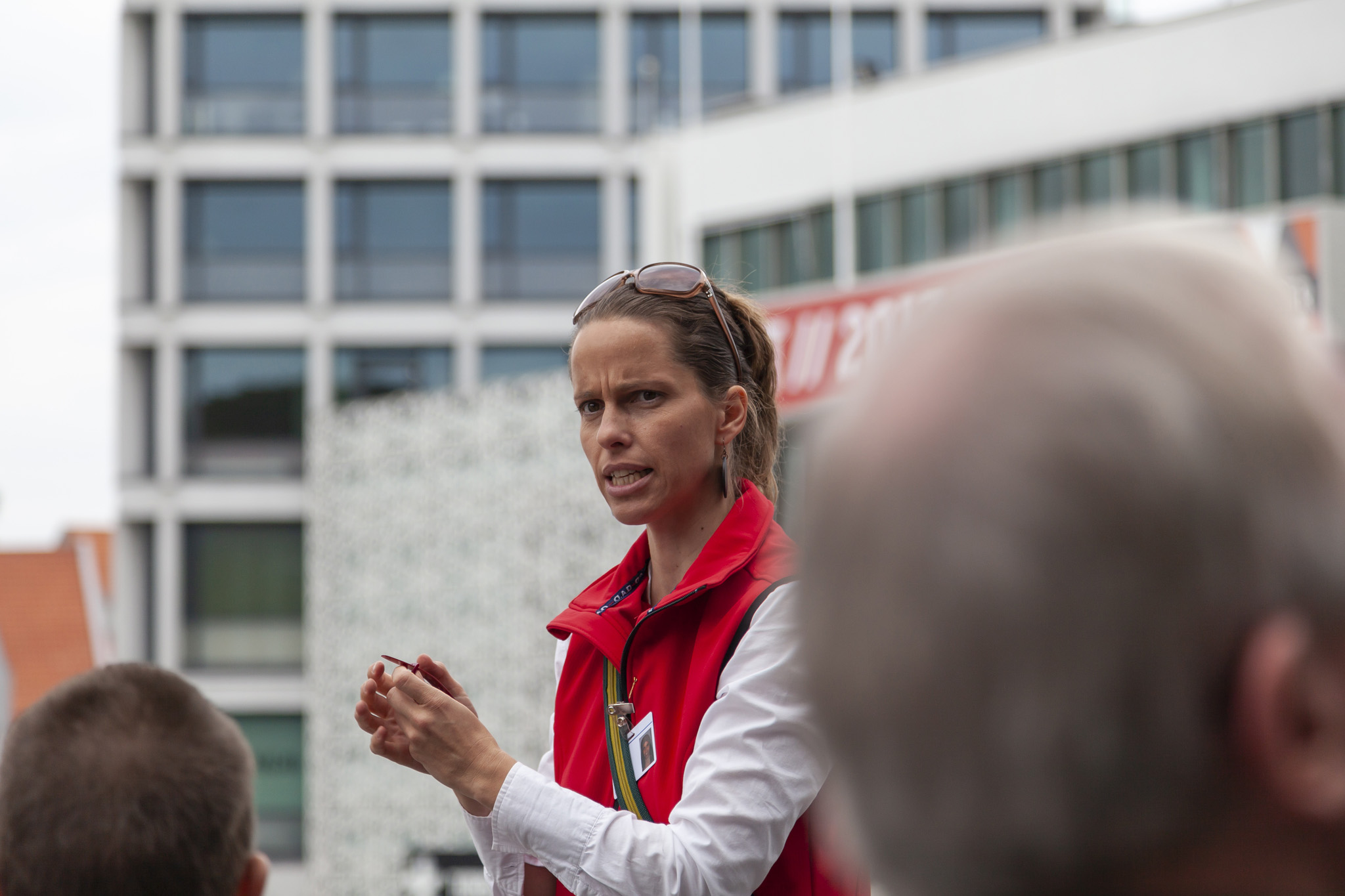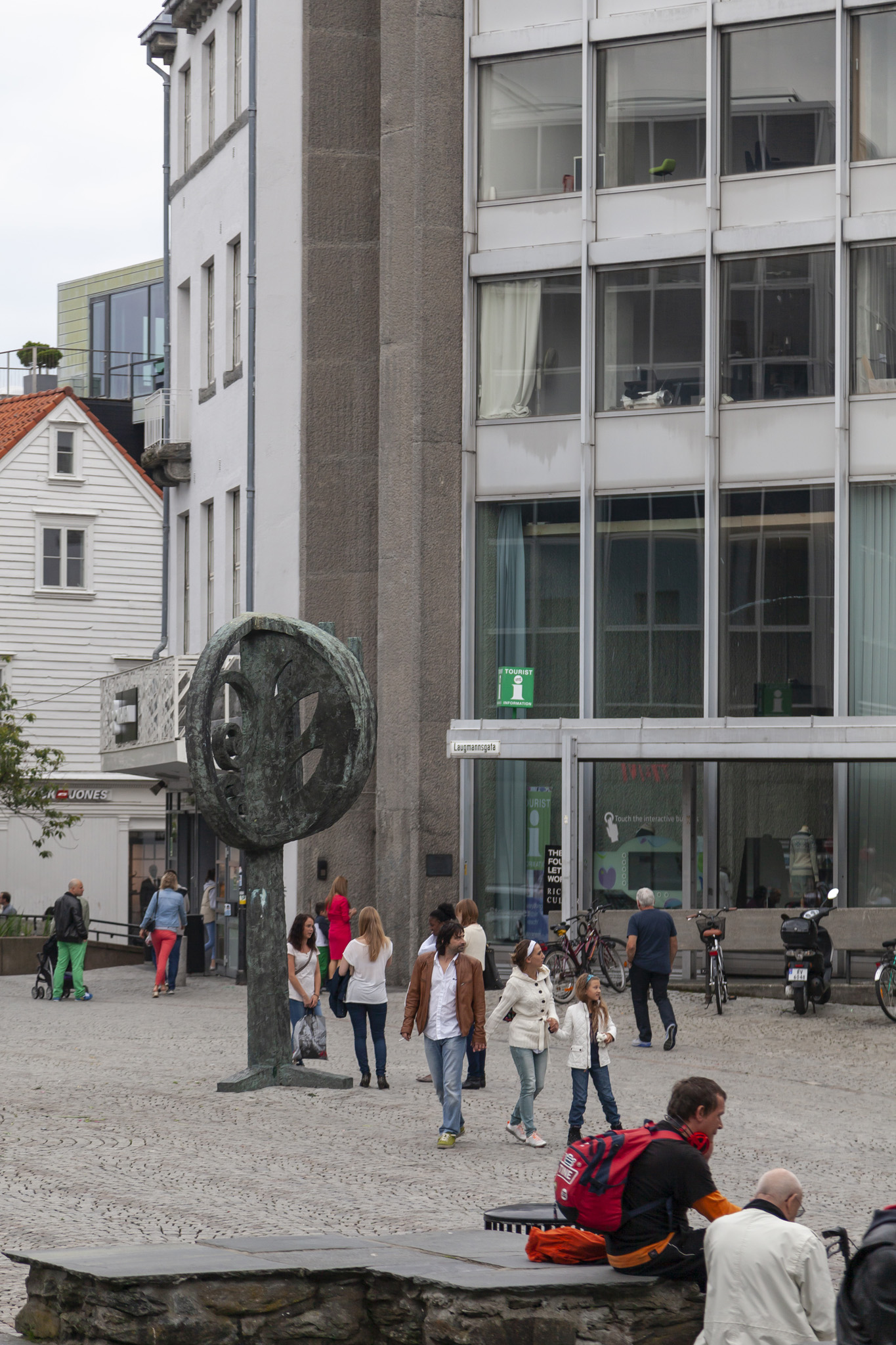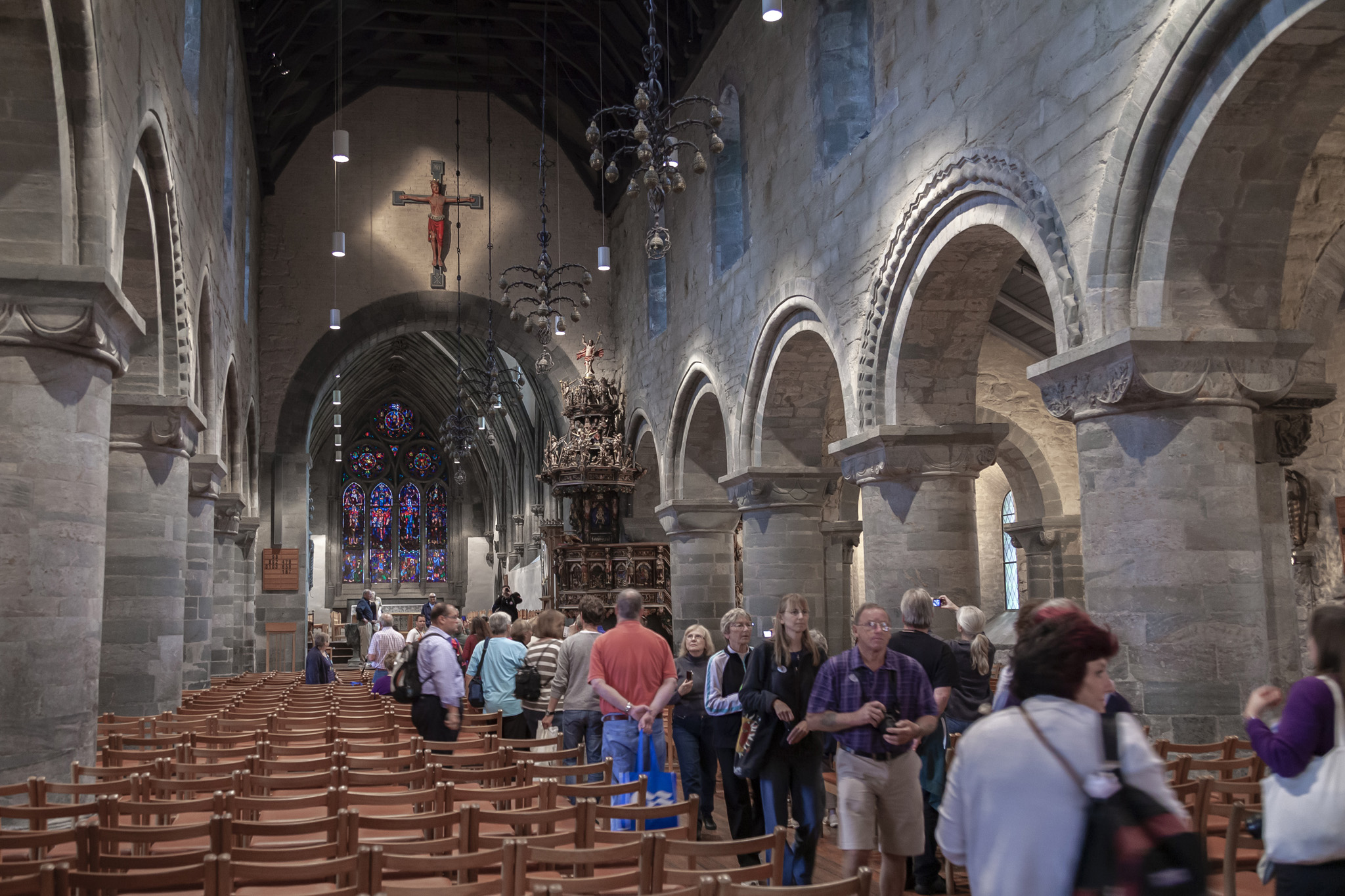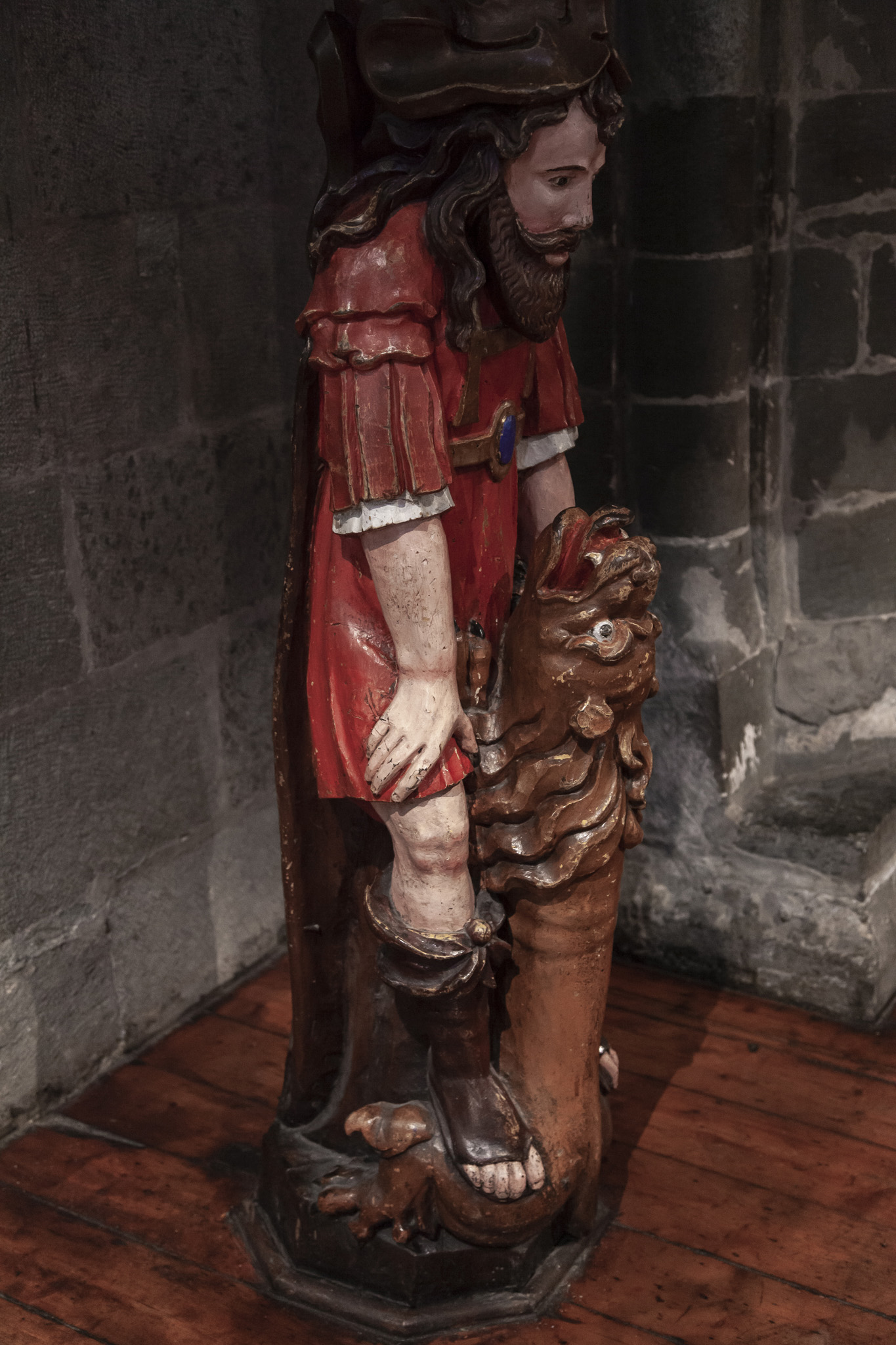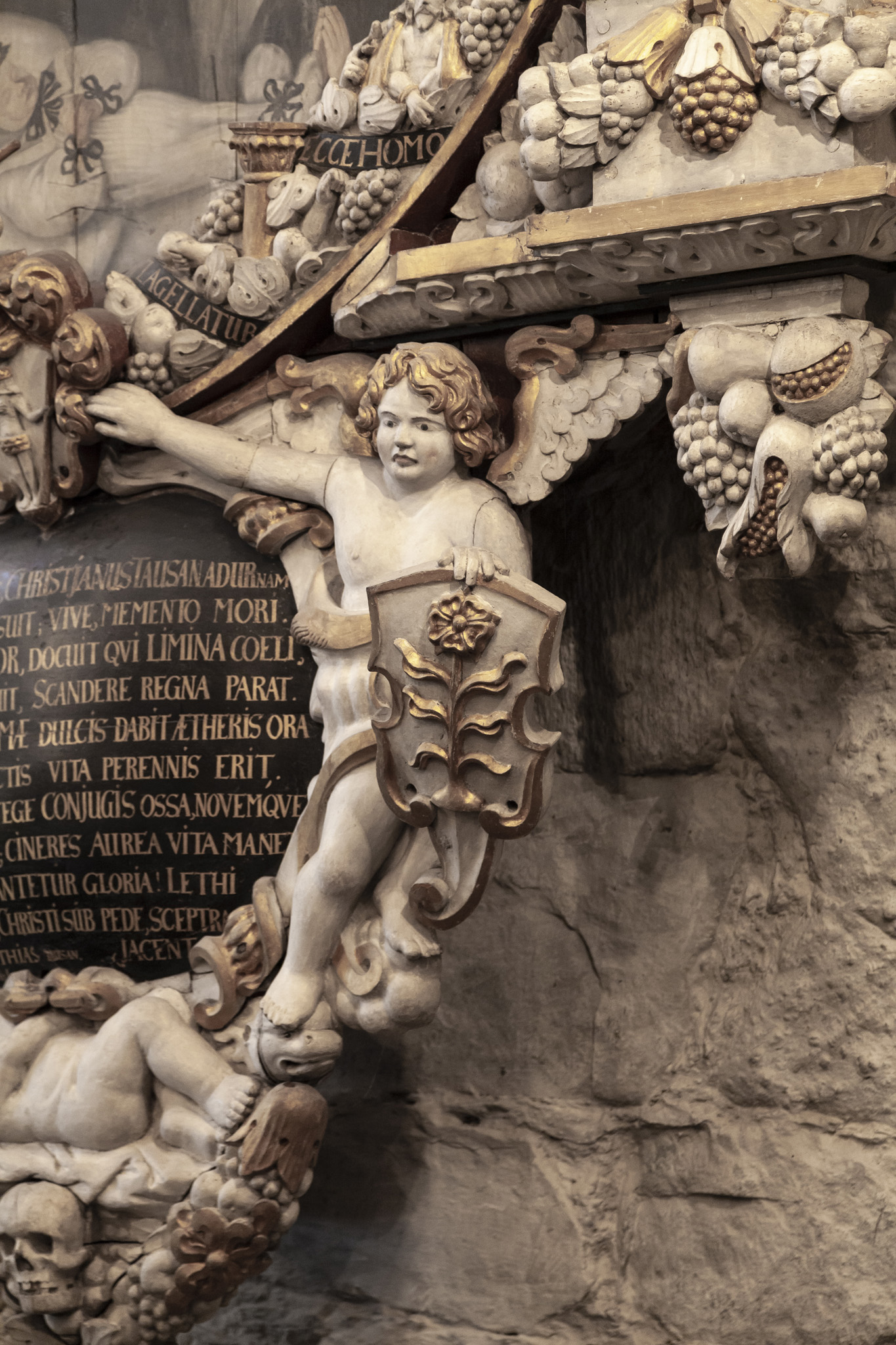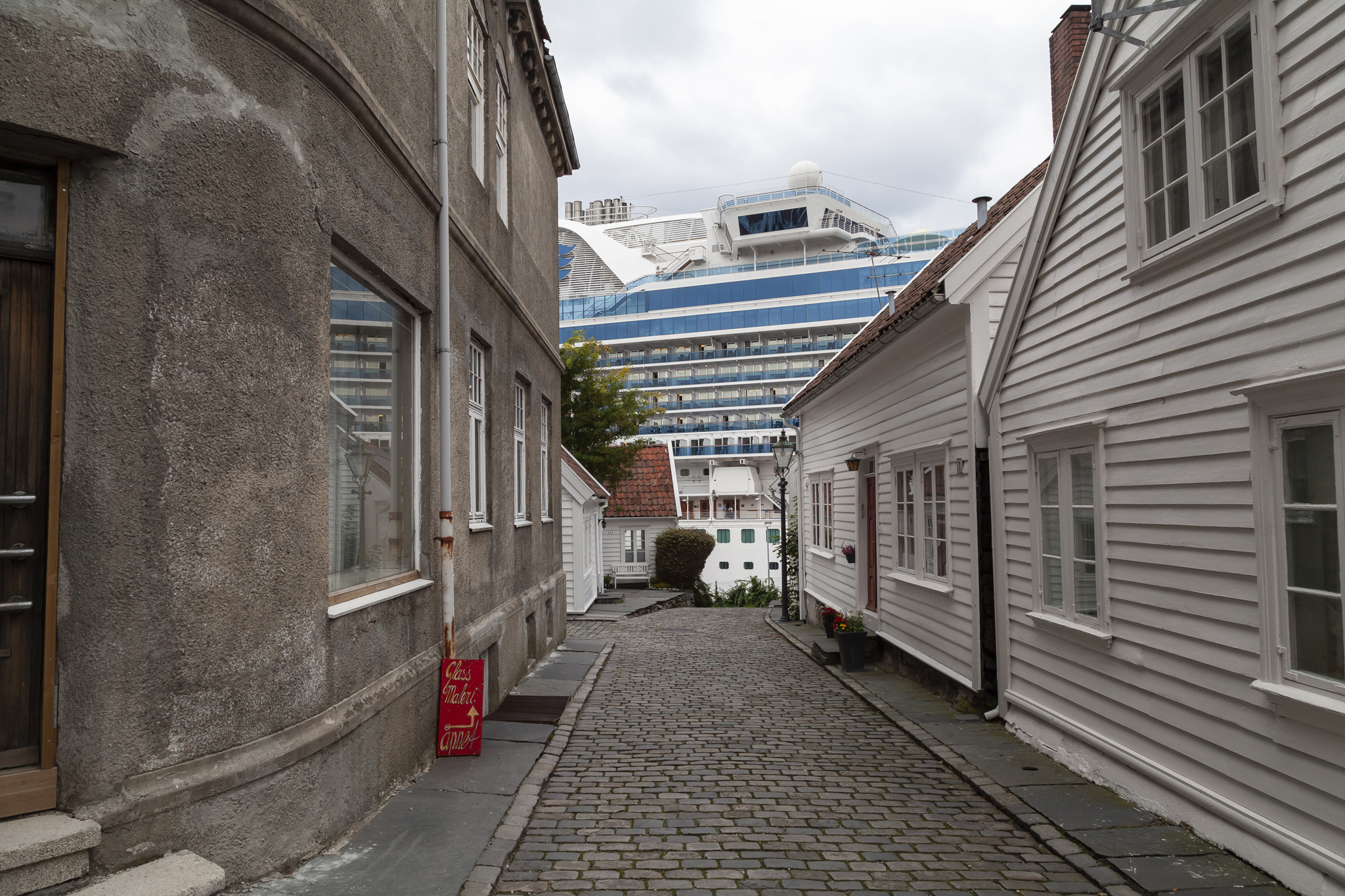The final port of call on our 2013 Norwegian fjords cruise aboard Crown Princess was the city of Stavanger. We’d booked an excursion through Princess Cruises for our time here and the morning had seen us taken for a visit to an Iron Age farm and telecommunications tower while the trip concluded with some time seeing a couple of places of interest in Norway’s fourth largest city.
Our bus dropped us off in the main square in the city centre, next to a park and lake, Breiavatnet, and with views to the inlet of water, Vågen, in which Crown Princess was docked. The proximity to greenery and water with all its boats, along with Norway’s naturally crisp (though pleasant) September air, gave everything a fresh feeling somewhat at odds with some of architecture on show, much of which was brutalist or modernist. This was partly the result of damage during World War 2 – the Germans had attacked and occupied the city following a parachute assault in early 1940 – and partly the result of an economic boom in the wake of oil discoveries in the North Sea during post-war years.
The first of the two things to see in Stavanger included in our organised excursion was Stavanger Cathedral. The city of Stavanger considers its formation to be the year 1125 despite the area being inhabited before that, and construction of Stavanger Cathedral is reckoned to have taken place between 1100 and 1150. The building of the cathedral was instigated by Bishop Reinald who likely came from Winchester in the Anglo Saxon kingdom of Wessex, giving Stavanger a loose connection with my home county of Hampshire.
Originally Romanesque in design, reconstruction was required following a large fire in 1272 and Gothic design elements were introduced. The present interior and exterior look of the cathedral, however, follows first a removal of medieval themes from the design then a partial restoration of them in the 1860s and post-war period from the 1940s to 1960s respectively. We can’t really say anything here because we keep changing our dining room too.
The first thing to be brought to our attention just inside the entrance of Stavanger Cathedral was a large tapestry by Frida Hansen. Frida’s history is an interesting one. The wealthy families into which she was born (1855) and married fell into some hardship during an economic downturn and for a time Frida had sole responsibility for her family. She sought to start up a business repairing tapestries and, later, having taken some courses, started producing tapestries of her own. Her skill was such that she put on exhibitions, won awards, and studied abroad. The prevailing art fashion at the time was art nouveau and she introduced this into her work back in Norway. Her final piece of work, however, was the Saint Olav Tapestry that hangs now in Stavanger Cathedral and, with art nouveau having gone out of fashion by the time she started in 1926, this piece reflects more traditional elements of Norwegian design. There is a good write-up about individual parts of the design of the wall covering here: Frida Hansen’s Last Large Tapestry.
Stavanger Cathedral isn’t a particularly large cathedral by any stretch of the imagination and has a fairly basic layout consisting of three main aisles with the nave’s abundance of semi-circular arches immediately announcing the original Romanesque architecture. The pulpit was particularly impressive; wooden, beautifully carved, and surprisingly colourful. If you’re visiting the cathedral in Stavanger then pay particular attention to the designs around the capitals of the pillars. Slightly odd for what was originally a Roman Catholic place of worship, but totally typical for anywhere you find yourself in Scandinavia, you’ll find imagery depicting scenes of Ragnarok which I’ve thoughtfully neglected to photograph thereby forcing you to book a trip to Norway to see for yourself.
As we left the building, a painted and carved wooden portrait consisting of Søfren Pedersen Godtzen, former mayor of Stavanger, along with his wife and eighteen children also caught our eyes, not least because of the eighteen children. I’m guessing there wasn’t a lot of day-to-day work for a seventeenth century mayor in Norway to do or he had aspirations of raising football teams. The cold, Norwegian winters can turn a man’s mind. You might only initially count sixteen offspring but if you look to the bottom left of the group you’ll spot the other two, obviously-deceased children too. A second portrait on the wall opposite was more interesting for its frame incorporating a skull and some almost surreal faces.
So, not a huge amount to see in the cathedral but worth a quick visit because of its historical age in the country and to take a look at some of the artistry on display.
A walk of a few hundred metres from the cathedral brought us to the final part of our final organised excursion on this cruise. Gamle Stavanger is now a clean, quaint area of cobbled streets with white, wooden-panelled buildings but it very nearly didn’t make it out of the 1950s unlike the first person we saw who was still investigating a murder in a liquor joint run by mobsters.
The original houses sprung up during the eighteenth and nineteenth centuries but following the second world war and the need to rebuild damaged areas this entire area was set to be demolished and for modern, concrete buildings to go up in place. Fortunately for tourism in general, the city architect at the time saw the potential in conserving the traditional structures and turning the rundown houses and businesses into something far more pleasing to the eye. Today, this old part of the city of Stavanger is a trendy location to own a home and the only major downside is people wandering through perpetually snapping photos.
A few flashes of street art and decoration aside, Gamle Stavanger appeared to be uniformly attractive at first glance but the painted panels and tiled roofs disguised quite a variety of housing designs and helped with the feeling of a natural evolution of buildings rather than something planned.
Gamle Stavanger is situated on the western side of the Vågen inlet which was also where our cruise ship was docked, making for an interesting, almost anachronistic sight in the old town part of the city. It certainly brought home – not that we needed it bringing home – just how large cruise ships are.
There are a few notably historic buildings amongst the collection of generally historic buildings dotted around Gamle Stavanger. A canning museum in a preserved cannery building is probably the main one (particularly if you like cans), although a traditional workers’ cottage and a building dating to 1726 both may be of interest too, with all three located along Øvre Strandgate. Sadly, all three were closed during our visit so we simply had to make do with soaking in some of the tranquility that comes from being taken back in time in our minds in these sorts of attractions. While most of the buildings are private residences you’ll also find some shops and cafés in the streets so whether the museum is open or not it’s all still worth a look around.
We had some time at the conclusion of our tour of some of Stavanger’s highlights to head into the main part of the city had we wanted but the proximity of Crown Princess to where our excursion terminated helped us to decide to hop back onto the ship instead.
Stavanger’s on no accounts the most appealing of the Norwegian ports if you’re taking a fjords cruise but the city has enough to see and do in and around it. Our tour was an eclectic one taking in sights from the Iron Age through medieval periods and into the telecommunications age, and a good taster of how history helps to build a place.
There were fewer photos taken on our cruise departure from Stavanger, you might be pleased to hear, but if you haven’t seen the pictures taken of the Norwegian landscape as we sailed into the city earlier in the day then please read this: Norwegian Fjords Cruise To Stavanger.
Leaving Norwegian waters and hitting the North Sea, Crown Princess then turned southwards to head for home. With us being on the starboard side of the ship this gave us the opportunity to even witness a sunset at sea from our balcony, something we’d not been able to do during the earlier days of this cruise. And you wonder why we like to cruise so much!?


